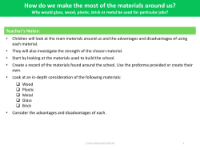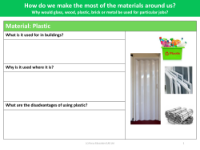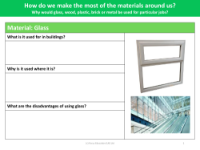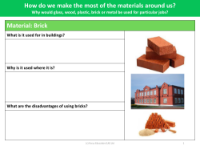Merits and drawbacks of wood - Worksheet
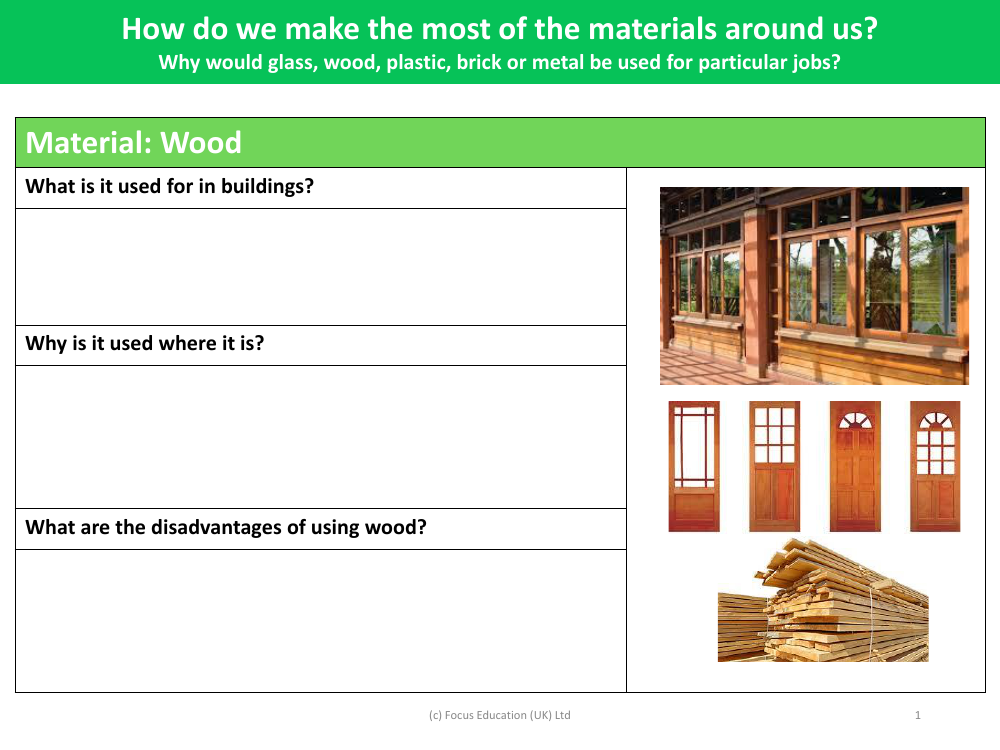
Science Resource Description
Wood is a versatile and natural material commonly utilised in the construction of buildings. It serves various purposes, from structural support as beams and joists to aesthetic elements like cladding, flooring, and joinery. The reasons for its widespread use in certain applications are numerous. Wood is favoured for its strength-to-weight ratio, making it a robust yet relatively lightweight option. It also offers a warm and inviting aesthetic, can be easily shaped and joined, and possesses natural insulating properties that contribute to energy efficiency. Moreover, wood is a renewable resource, which, when sourced sustainably, can be an environmentally friendly choice for construction.
Despite its advantages, wood also presents several disadvantages when used in building. It is susceptible to damage from water, insects, and fungi, which can compromise its structural integrity and longevity if not properly treated or maintained. Wood is also flammable, posing a potential fire hazard. Over time, it might warp or crack due to changes in humidity and temperature, affecting both its appearance and performance. In the broader context of material selection for construction, considerations such as durability, cost, environmental impact, and the specific functional requirements of the job dictate whether materials like glass, wood, plastic, brick, or metal are chosen. Each material has unique properties that make it suitable for certain uses, and understanding these characteristics is key to optimising their application in building projects.

